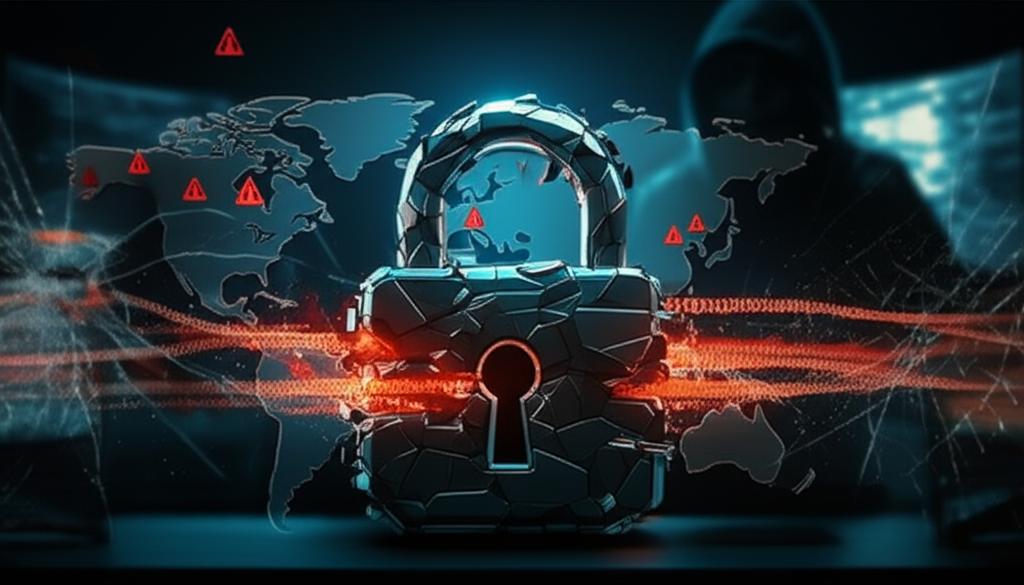Unmasking the Destructive Force: What is RansomHub Ransomware?
Understanding the Destructive Force: RansomHub Ransomware Explained
In the ever-evolving landscape of cyber threats, a new and particularly aggressive player has emerged: RansomHub ransomware. Operating as a Ransomware-as-a-Service (RaaS) model, RansomHub has quickly gained notoriety for its sophisticated attacks and its ability to inflict significant damage on organizations across various sectors. This comprehensive guide will unmask the intricacies of RansomHub, exploring its operational mechanics, its impact, and crucial strategies for defense.
What is RansomHub Ransomware?
RansomHub is a relatively new RaaS operation that first appeared on the threat intelligence radar in early 2024. Unlike traditional ransomware groups that execute attacks themselves, RansomHub provides its ransomware infrastructure and tools to affiliate hackers. These affiliates then conduct the actual breaches, encrypting victim data and demanding cryptocurrency payments, with a share of the ransom going back to the RansomHub operators.
Observers note that RansomHub shares several characteristics with previously dismantled or rebranded ransomware groups, such as ALPHV/BlackCat and LockBit, suggesting a potential continuation or rebranding of experienced threat actors. The group’s affiliates are known for their targeted approach, focusing on high-value organizations that are likely to pay substantial ransoms.
How RansomHub Operates: The RaaS Model and Double Extortion
The Ransomware-as-a-Service (RaaS) model is central to how RansomHub ransomware functions. This model democratizes access to advanced cyberattack tools, allowing less technically proficient individuals or groups to launch devastating campaigns. Here’s a breakdown of their typical operational flow:
- Affiliate Recruitment: RansomHub actively recruits experienced hackers, often from underground forums, offering them a significant percentage of any successful ransom payments.
- Initial Access: Affiliates gain unauthorized access to target networks through various methods, including exploiting vulnerabilities (e.g., unpatched software, misconfigured systems), phishing attacks, or compromised credentials.
- Network Persistence and Lateral Movement: Once inside, attackers establish persistence, move laterally across the network to identify and compromise critical systems, and often disable security software.
- Data Exfiltration (Double Extortion): Before deploying the encryption payload, RansomHub affiliates typically exfiltrate sensitive data from the victim’s network. This constitutes the “double extortion” tactic: if the victim refuses to pay for decryption, their stolen data will be leaked on a dark web blog or sold to competitors.
- Data Encryption: Finally, the ransomware payload is deployed, encrypting files and systems, rendering them inaccessible. A ransom note is left, demanding payment in cryptocurrency (often Monero or Bitcoin) for the decryption key and to prevent data leakage.
The use of multi-threaded encryption and sophisticated obfuscation techniques makes RansomHub ransomware particularly difficult to counter once deployed.
The Devastating Impact of RansomHub Attacks
Organizations hit by RansomHub ransomware face a cascade of severe consequences:
- Financial Loss: This includes the ransom payment itself (which can be millions of dollars), recovery costs, legal fees, and potential fines from regulatory bodies.
- Operational Disruption: Encrypted systems halt business operations, leading to significant downtime, loss of productivity, and inability to serve customers.
- Data Breach and Reputational Damage: The exfiltration of sensitive data can lead to regulatory penalties (e.g., GDPR, HIPAA), class-action lawsuits, and a severe loss of customer trust and brand reputation.
- Loss of Intellectual Property: Trade secrets, proprietary information, and research data can be stolen and potentially sold, impacting competitive advantage.
Defending Against RansomHub and Other RaaS Threats
Effective defense against RansomHub ransomware requires a multi-layered, proactive cybersecurity strategy. Organizations must prioritize robust security measures and a strong incident response plan:
- Robust Backup and Recovery: Implement immutable, offline, and geographically separated backups. Regularly test your recovery procedures to ensure business continuity.
- Strong Access Control: Enforce strong, unique passwords and multi-factor authentication (MFA) across all accounts, especially for privileged users. Implement the principle of least privilege.
- Patch Management: Regularly update and patch all operating systems, applications, and network devices to address known vulnerabilities that attackers frequently exploit.
- Endpoint Detection and Response (EDR): Deploy advanced EDR solutions to detect and respond to suspicious activities on endpoints in real-time.
- Network Segmentation: Divide your network into smaller, isolated segments. This limits lateral movement and contains the damage if one segment is compromised.
- Security Awareness Training: Educate employees about phishing, social engineering, and safe browsing practices, as human error remains a primary attack vector.
- Incident Response Plan: Develop, test, and regularly update a comprehensive incident response plan. Know who to call and what steps to take immediately after a breach is detected.
- Email and Web Security: Implement advanced email filtering and web security gateways to block malicious links and attachments.
Conclusion: Vigilance is Key
RansomHub ransomware represents a significant and ongoing threat to organizations worldwide. Its RaaS model and double extortion tactics make it a formidable adversary. By understanding its mechanisms and implementing robust, proactive cybersecurity measures, businesses can significantly reduce their risk of becoming another victim. Continuous vigilance, employee education, and a strong defense-in-depth strategy are paramount in the fight against this destructive cyber menace.







